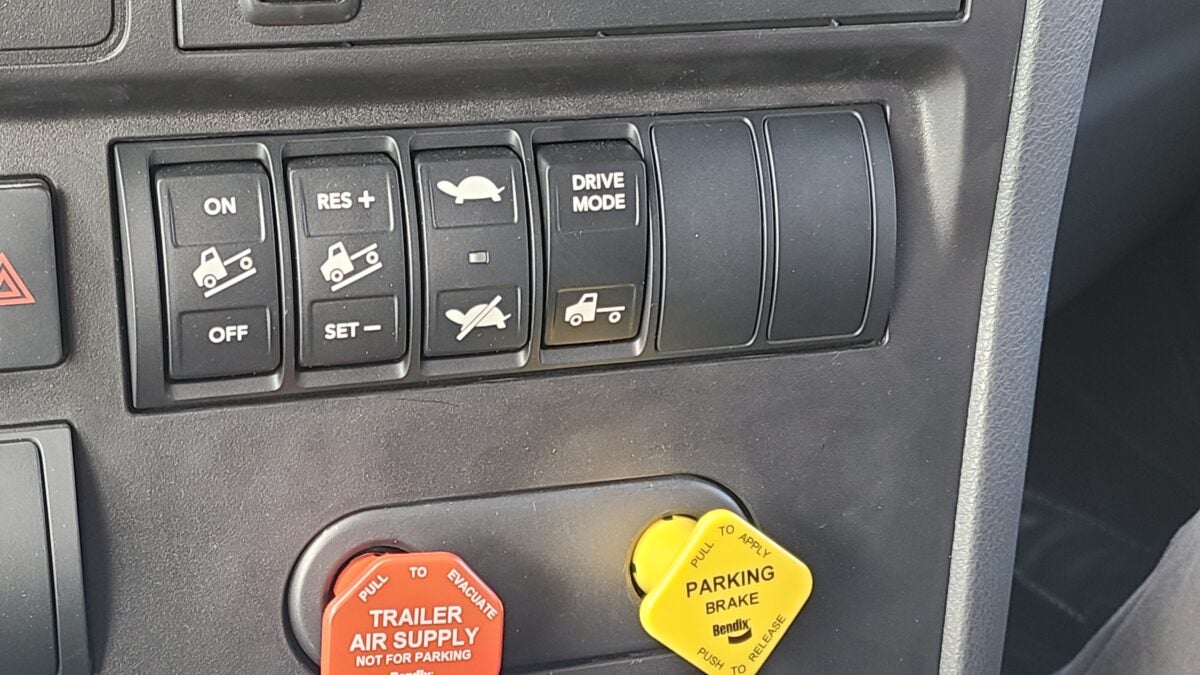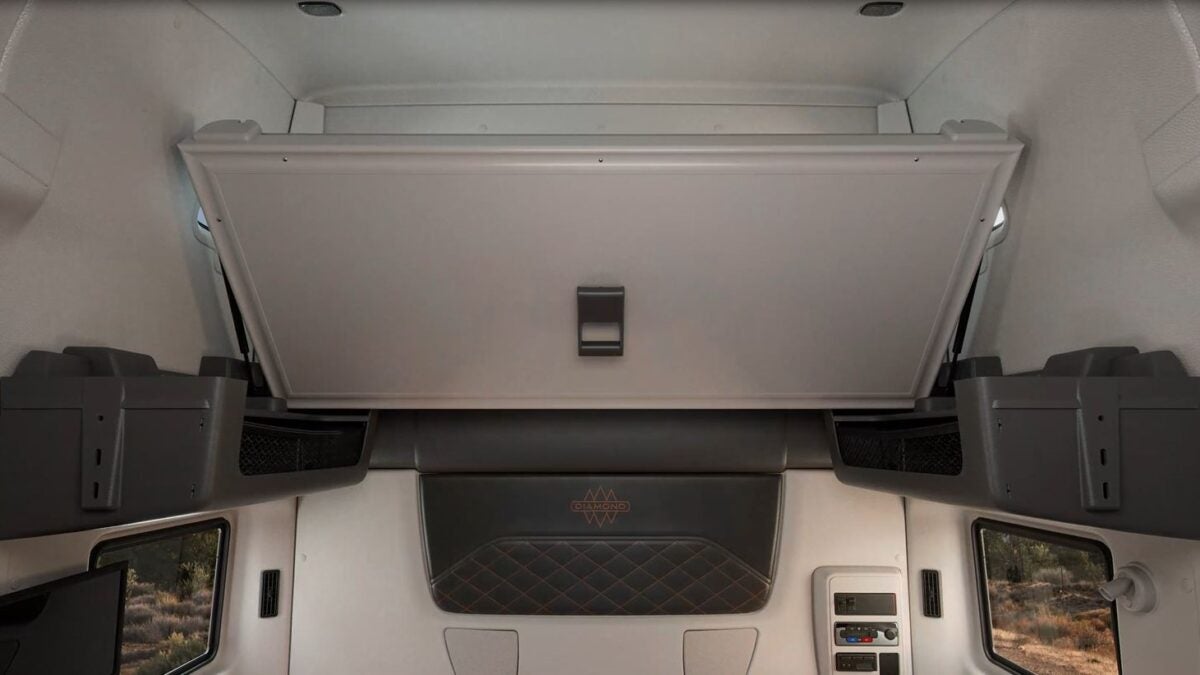LAS VEGAS — Navistar Inc.’s S13 integrated powertrain for its on-highway trucks is the manufacturer’s last new internal combustion engine. It is the strongest signal yet that legacy truck makers are embracing electric trucks with zero tailpipe emissions.
Combined with aerodynamic styling, the new powertrain that goes into production in July 2023 offers up to 15% better fuel efficiency than the current A26 engine and Eaton Cummins Endurant transmission in Navistar’s flagship on-highway International LT. The emissions profile of the new engine is pending certification.
The S13 represents the North American result of five years of global collaboration between Navistar and parent Traton Group. Traton developed the base engine at its Swedish subsidiary Scania two years ago.
“Scania was a good teacher,” Michael Grahe, Navistar’s head of operations, said during a reveal for the new powertrain before dealers, customers and media at the Las Vegas International Speedway on Tuesday.
Watch now: Navistar’s revamped LT on the track in Las Vegas
The S13 is being built at Navistar’s engine plant in Huntsville, Alabama, where Navistar invested $190 million for the new engine and key components.
When mated with Navistar’s T14 transmission — the company’s first internally developed transmission — the integrated powertrain takes a major step toward Navistar’s goal of selling 50% zero-emission vehicles by 2030, rising to 100% by 2040.
Electric future but a long road for diesel
“Obviously, with Navistar’s product mix, electric medium-duty trucks will make up most of the 2030 number,” Navistar CEO Mathias Carlbaum told FreightWaves on the sidelines of the launch event. “But we’ve said before that when the industry is ready for long-haul electric trucks, we’ll be there.”
At the reveal program, electric trucks received barely a mention. However, Mark Hernandez, Navistar executive vice president of manufacturing, told FreightWaves that a Class 8 International RH battery-electric truck for regional haul will be built at Navistar’s new assembly plant in San Antonio.
Navistar is expected to formally introduce the battery-electric RH next year. It quietly displayed a prototype at the Advanced Clean Transportation Expo in May.
Despite supply chain disruptions, Navistar produced 50 medium-duty MV trucks a day at the end of July in San Antonio, Hernandez said. The goal was 52 trucks a day.
S13 could save $31,000 in fuel over 5 years
Presentations on the modular approach to the S13 — which will replace Navistar’s A26 engine introduced in 2017 — covered how Traton and Navistar took a clean sheet approach in a powertrain alliance formed when Traton parent Volkswagen AG acquired its initial stake in Navistar in September 2016.
Traton spun out of VW as a truck holding company in 2018. It paid $3.7 billion for the rest of Navistar in July 2021.
Orders for the S13 open in October. The updated LT Series can be specified with the 13-liter S13 engine mated with the 14-speed T14 automated manual transmission with a more efficient dual-stage aftertreatment system. Navistar will continue to offer a 15-liter Cummins X15 with Endurant transmission.

Compared to Navistar’s first-generation A26 engine specified with the 12-speed overdrive Eaton-Cummins Endurant HD automated transmission, the new S13 Integrated Powertrain together with the aero package delivers up to 15% improved fuel efficiency.
The S13 integrated powertrain expects to be 11% more efficient than the current A26. introduced in 2021. The current A26 was 4% more efficient than the first-generation A26 introduced in 2017.
The S13 is 30-52 pounds lighter than the A26 with the Endurant transmission. The S13 is the lightest-weight 13-liter powertrain on the market, Grahe said. It could save a fleet $31,000 in fuel over five years based on diesel at $4 a gallon.
What’s new in the International LT?
The revamped LT offers an improved aerodynamic package that includes:
- Diesel Exhaust Fluid (DEF) and fuel fill closeouts to allow air to flow smoothly over the chassis skirts.
- Steer wheel closeouts and a modified lower skirt trim to improve underbody airflow by restricting it through the wheel opening.
- A new roof extender that improves airflow between the tractor and trailer gap.
The updated front-end design adopts a family look for the bumper and grille. It is consistent with recent updates to other International truck models.
Inside the sleeper cab, a 9-inch sleeper mattress and flip-up bunk help maximize cab space for over-the-road truckers when they’re not driving.

Electronic parking brake technology automatically engages the vehicle and trailer parking brakes if the driver forgets to set them. A steering wheel airbag is optional.
Modular approach
Modular system design of the S13 allows for varied offerings across Traton’s brands. That speeds time to market and reduces production costs. Cross-brand development gave the North American market the first example of regional adaptation and validation. The engine mounts practically the same way in the conventional body LT as it does in the cabover Scania.
Work on the engine continued 24/7 around the world at Traton operations in Europe, Brazil and North America.
It was not always easy to deal with cultural differences before Navistar became a member of the Traton family, Grahe said. He worked on the engine program from the beginning when he was a Traton executive.
Navistar has not disclosed its spending on the S13 project integrated powertrain. Scania invested more than 2 billion euros ($1.993 million) on the award-winning Scania Super engine that is the base of the S13.
Navistar is offering owners an S13 package that includes dealer integrated software, built-in service products and repair maintenance contracts.
Editor’s note: Corrects eMV production to MV production; clarifies fuel savings over A26 engines and adds link to Scania spending on Super engine that is the basis of the S13.
Related articles:
Navistar readies integrated powertrain from collaboration with Traton Group
What’s changed at Navistar a year after Traton’s $3.7B takeover?








troverman
I am disgusted by the once storied American International / Navistar brand now being owned by the Germans, just like Freightliner and Western Star, and Mack owned by the Swedes. That only leaves Paccar with a Cummins; I’m fine with a KW or Pete.
Electrification is nothing I want. The amount of power needed to quickly recharge a big rig is on the order of a small power plant for one truck. Not to mention the loss of payload offset by the enormous battery.
Tim Daugherty
NAVISTAR never should have closed Garland Assembly Plant. Thanks Jan Alman and Craig Holmes.
Carlos
I’m owner operator and I have 2019 international LT i do have a question about the Recall on this truck please contact me because I’m looking at to buy another truck I do like this trucks #4014992899
D. J. Esposito
All that is wonderful for the green crowd out there .
It speaks volumes to me that air bags are optional. In this day of safety, there’s no concern for the driver . I guess it would be a waste of money with the possibility of autonomous rigs.
I’d rather a freight shaker over a combine any day . I never liked the highway horn button on the wheel, and the seat was left of steering center .
Glad to be retired !
Be safe out there !